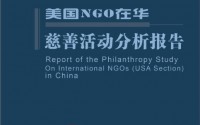03 Nov 2012
Chinese Philanthropy Beyond Rapidly Declining Number
10 days after the Giving Institute released the latest giving report in the United States on June 18,2012, China Charity Donation Information Center (CCDIC) issued a similar report on giving in China in 2011. While it has been frequently quoted that donations in China plummeted nearly 18% in 2011 partly due to scandals in the sector, the giving picture in China is far more sophisticated than the declining number.
1. What is the overall giving picture?
Charitable giving in China, which included money, in-kind donations and securities, totaled CNY84.5 billion, or $13.3 billion, in 2011. Based on a report from CCDIC, I made an inforgraphic to put giving in China, the US and Singapore in a context. [Please click the picture for a larger view,if you want]
From the chart above, we can see the US is leading in almost every aspect of charitable giving, and China is lagging far behind. Even though Singapore is not comparable to China in the size of either population or GDP, it exceeded China in two areas – Giving in % of GDP and Giving per capita.
2. Who are the dominate giving sources?
The categories of sources may not look intuitive to western readers. [Honestly, not even to me, a native Chinese! ] Without going into complicated details, I’ll just put it in a general term – People’s organizations and Institutional Units are government related, and some Social Institutions have close ties with the government.
You are probably wondering – Where is the place for foundations? Good question! Those of you who are familiar with Chinese philanthropy may have already known that Chinese foundations are mostly operating foundations, so they actually appear as recipients of charitable giving.
Another thing that may shock you is the contribution divide between corporations and individuals: 57.8% from corporations, 31.62% from individuals, and the number in the US is 5% and 73% respectively. The numbers are deceiving. OK, two more pieces of information: among corporations, giving from private enterprises accounts for 57.89%, and that from SOEs (State-Owned Enterprises ) is 23.8%; business owners and managers contributed a lion share of 89.5% in the category of individual giving.
Apparently private enterprises are a big contributor to the total giving in China, which has been that way for many years. However, it’s almost impossible to distinguish giving by private enterprises from that by entrepreneurs. Corporate foundations are more commonly seen among SOEs and MNCs (Multi-National Corporations) in China. At the same time, private foundations were not allowed until 2005. Without established mechanism, many private business owners donate in the name of their business1. When composing his well-known Hurun Philanthropy List, HuRun made a statement that “Donations made by a corporate in which an individual has more than a 50% holding, are also recognized as being a part of that individual’s personal donation.”
It helps to remember that both private business and foundations are relatively new concepts in China. The good news is that corporate foundations among private business are picking up, and some high net-worth individuals are considering the avenue of family foundation. We should expect the cloudy picture to become more clear in the future.
3. How have scandals impacted giving?
Anybody who follows Chinese philanthropy through the year must have heard of the scandals in Chinese social sector, highlighted by the incident with Guo MeiMei and Red Cross Society China(RCSC), followed by a few high-profile NGOs with close ties with the government. In case you are curious, China Daily has a report. How have these scandals impacted giving in China in 2011?
Among these different types of organizations, RCSC and Civil Affairs agencies are most related to the government, and they experienced the deepest drop in receiving in 2011. Charity Federation and foundations fall into the category of Social Institutions. Although some of them are connected to the government to a different extent, they generally enjoy higher trust from the public. The chart above shows charity federation(s) and foundations received about 64% of the total giving, and they didn’t see a dramatical change in receiving despite the scandals.
Although scandals was an overwhelmingly hot topic in Chinese social sector in the second half of 2011, and they have indeed contributed to the decrease of charitable donations to government related agencies and organizations, it may not be appropriate to cite scandals as a major cause in the decline of charitable giving in China in 2011, as shown in the chart.
At the same time, these scandals and the following debate in the sector have certainly helped raise the awareness of transparency and accountability in the social sector, and they seem to have also played a catalytic role of channeling some resources from government monopoly to non-governmental organizations. In fact, these are all positive changes. Don’t you think this could be considered a living case of Lao Tse’s classical teaching on “good fortune lies within bad fortune, and bad fortune lurks within good fortune”?
4. Why has the giving plummeted?
If scandal is not a major reason, what has caused the sharp decrease in giving? From the CCDIC data, weather should take the blame. No, I’m not kidding.
The difference in giving between 2011 and 2010 is CNY18.7 billion, and the drop in disaster relief from 2010 is CNY20 billion. So, you see the difference? After the tragedy earthquake in 2008, and severe drought, earthquake and mudslide in 2010, China finally got a break in 2011, and the same with donation for disaster relief.
While we should feel a moment of relief from seeing people suffer from disasters, it’s also worth noting that Chinese philanthropy is still heavily geared toward fulfilling immediate needs. The giving in the last few years has clearly demonstrated this focus, when 2008 and 2010 saw a surge in donation because of major disasters.
Such a focus can be traced far back to Chinese giving tradition and shifts government attitudes in the last few decades, which in itself should be another article. Putting this relief-focused giving into today’s context, I (personally) see two potential problems: firstly, it creates confusion between charity work and government responsibility, and this confusion is clearly reflected in government policy and regulations; secondly, it fails to leverage the most precious advantage of philanthropic capital – risk-taking freedom and independence.
5. What are the major trends in giving in China?
China Charity Donation Information Center has observed several trends in the giving in China in 2011.
- Individual giving is on the rise and mega-giving is emerging. There has been an average of 4 percentage points increase in individual giving in the last three years. 40 mega-giving (giving of $16 million or above ) records were observed in 2011, among which, the $573 million donation from Cao DeWang, an entrepreneur and philanthropist, set a record high, followed by a $142 million pledge from Huang NuBo, and a $80 million giving from Xu JIaYin.
- Foundation, receiving about 40% of the total giving in 2011, is becoming a major recipient of charitable donations.
- Government still plays an important role in soliciting charitable dollars. Take GuangDong province as an example. A total of $507 million dollars were raised on a Day of GuangDong Poverty Alleviation, organized by GuangDong provincial government. Corporations were major participants in such solicitaiton.
- Transparency has become a major appeal to donors, and donors have started to ask harder questions. Social media is gaining popularity in fundraising partly due to its innate transparency and partly its fast reach to a broad audience. Free Lunch campaign is a case in point, which was started by a journalist on Weibo ( Chinese twitter ) and achieved sweeping success of raising about $4 million dollars in about 8 months from all over the country via Weibo promotion. Such activities, initiated by individual citizens and conducted mostly through social media for social good, have earned a new name “micro-charity” in China. Experts in the industry consider micro-charity as a fight against distrust in traditional charity practice.
- Education and poverty alleviation continue attracting the bulk of charitable dollars in 2011. University foundations are seeing rapid growth.
Mr. Howard Freeman commented on an article entitled “Charity Scandals in China Blamed for Steep Drop in Donations” from The Chronicle of Philanthropy, which I really like :
Would like to see private individuals assume the lion’s share of giving in China, as in countries elsewhere, both from a sustainability standpoint and to encourage transformation of the heart through generosity. Economic vicissitudes (exports decreasing > gifts declining), while important, shouldn’t create such a swing either way.
It is indeed an interesting time for Chinese philanthropy. I used to be very much concerned about Chinese philanthropy lagging far behind. Now my concern becomes it may grow too fast. But any way, it’s really exciting to be in that space with unprecedented energy and dynamics. What do you think?
Lastly, this post is based on a report from CCDIC. I am really happy to see Chinese social sector is taken data collection more and more seriously (another example is China Foundation Center), and I also want to thank Mr.Song ZongHe, head of the information office of CCDIC, for his insight and help in clearing up some confusing concepts.
Note:
1. Some people may argue some entrepreneurs do that partly for PR consideration.







